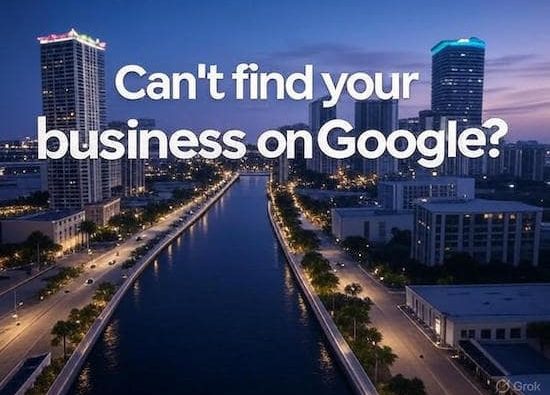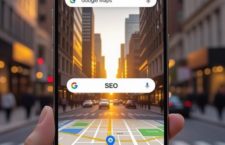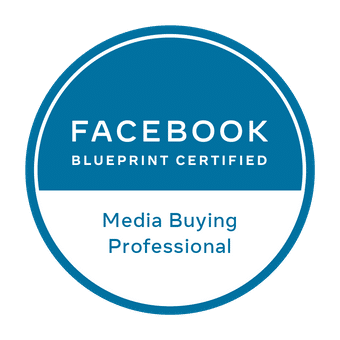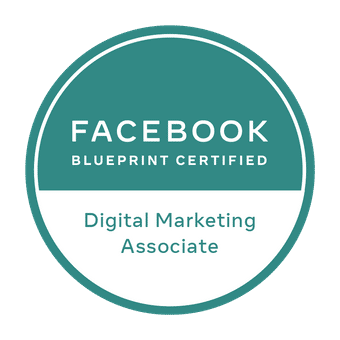
You dedicated your time and effort into starting your business. You have a real building, a real phone, and real customers who love you. But online? It’s like your shop is a ghost. You see competitors pop up when you search, but your business is nowhere. It’s frustrating, and you’re asking one simple question: “Why can’t Google find me?”
Think of Google as the world’s most powerful digital phone book mixed with a town crier. If you’re not in it, you don’t exist to people searching. The good news is that getting listed isn’t magic. It’s about fixing a few common mistakes. Let’s walk through the top 5 Reasons Why Your Business is Missing on Google Maps and Search and how to fix them.
Problem One: Your Google Business Profile is Missing or Incomplete.
Imagine you throw a party but forget to put your address on the invitation. No one can show up. That’s what a missing or incomplete Google Business Profile (GBP) is like. Your GBP is your digital storefront on Google Maps and search. It’s the single most important tool for local businesses. If you don’t have one, or it’s empty, Google has no way to connect searchers to your door.
To fix this, you need to claim your business listing. Search for “Google Business Profile” and follow the steps to create yours. This is your invitation. But don’t stop there. You must fill out every single section. Add your hours, your phone number, photos of your work, and a clear description of what you do. A complete profile is like a welcome mat. It tells Google and customers that you are open for business and ready to serve.
Problem Two: Google is Confused About Where You Are.
Now, imagine you send out invitations with your correct address, but you also have old flyers circulating with a wrong address. Your guests would get confused and might not come. This is called a NAP inconsistency. NAP stands for Name, Address, and Phone number. If your business has different NAP information on different websites—like an old phone number on Yelp or a misspelled name on a directory—Google gets confused. It doesn’t know which listing is correct, so it may not show any.
The best way to correct this is to clean up your listings. Make a list of every website that has your business information. This includes Facebook, Yelp, the Yellow Pages, and your local chamber of commerce website. Go to each one and make sure your Name, Address, and Phone number are exactly the same everywhere. This consistency builds trust with Google. It proves you are who you say you are and you are where you say you are.
Problem Three: Your Website Doesn’t Speak the Local Language.
Let’s say your business is a pizza shop in Tampa. If your website only talks about “great pizza” but never mentions “Tampa” or “Florida,” how is Google supposed to know you’re the best place for someone searching “Tampa pizza shop”? Your website might be beautiful, but if it doesn’t speak the local language, it’s like having a billboard in the desert with no town named.
To solve this, you need to add local keywords to your website naturally. Don’t just stuff words in. Write a page about your story and mention your city. Create content about serving the Tampa community. Make sure your city and state are on every page, usually in the footer. Most importantly, have a clear “Contact Us” page with your full address and a map. This tells Google your location and helps it connect your website to your local area.
Problem Four: You Have No Customer Reviews to Build Trust.
Would you rather eat at a restaurant with dozens of reviews and a 4.5-star rating or one with no reviews at all? Everyone chooses the reviewed one. Reviews are like digital word-of-mouth. They are social proof that tells new customers you are legitimate and trustworthy. A complete lack of reviews signals to Google that your business might not be active or reputable.
The way to correct this is simple but requires effort: you must ask for reviews. After you finish a job or have a happy customer, send them a direct link to your Google Business Profile and politely ask for their feedback. Make it easy for them. You can not offer incentives for reviews, but you can always ask. Responding to every review, both good and bad, shows you care. This activity tells Google your business is engaging and valued, which helps your ranking.
Problem Five: Your Business is Invisible on Mobile Phones.
Most people search for local businesses on their phones while walking around. If your website is slow to load or looks broken on a mobile screen, that user will hit the back button instantly. Google sees this quick exit as a bad sign. It’s like having a messy, locked door to your shop—people turn away. If your site isn’t mobile-friendly, Google will be less likely to show it.
Fixing this is a technical step but crucial. You can test your website by pulling out your phone and looking it up. Is it easy to read? Do the buttons work? Can you find your phone number without zooming in? If not, you need a “responsive” website. This means it automatically adjusts to fit any screen. Many modern website builders like WordPress or Wix offer mobile-friendly templates. This ensures every potential customer has a good experience, which is exactly what Google wants.
Fixing these five problems will build a strong foundation for your business to be found. It takes time and patience, but the result—a steady stream of new local customers finding you online—is worth every minute.
About Blue Farm Google Ads and SEO Management
For Tampa Bay area businesses, getting found online is our specialty at Blue Farm Google Ads and SEO Management. We understand the unique character of our local communities, from the busy streets of downtown Tampa to the growing suburbs. Our team focuses on a clear, hands-on approach to Google Ads and SEO management. We don’t just make promises; we build a tailored blueprint for your success, handling the technical details so you can focus on running your business. If you’re a local business owner ready to truly generate leads from Google Search in Tampa, St. Petersburg, Clearwater, and the surrounding areas, we invite you to reach out for a consultation. Let’s grow together.







